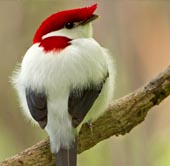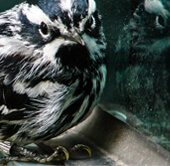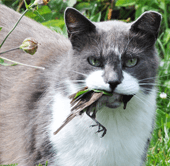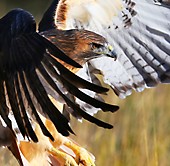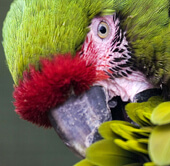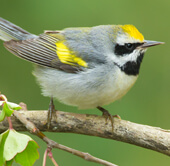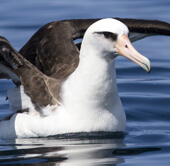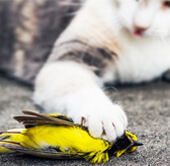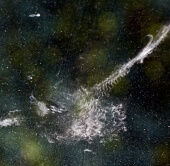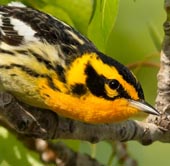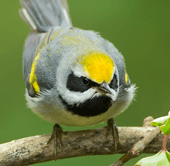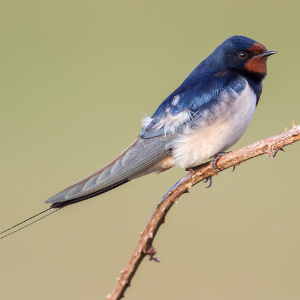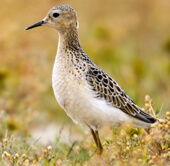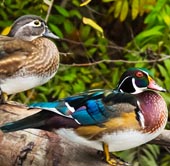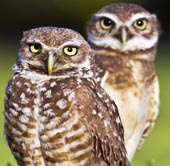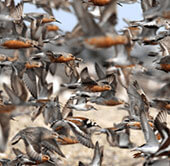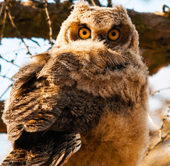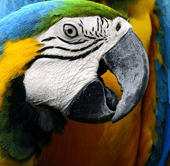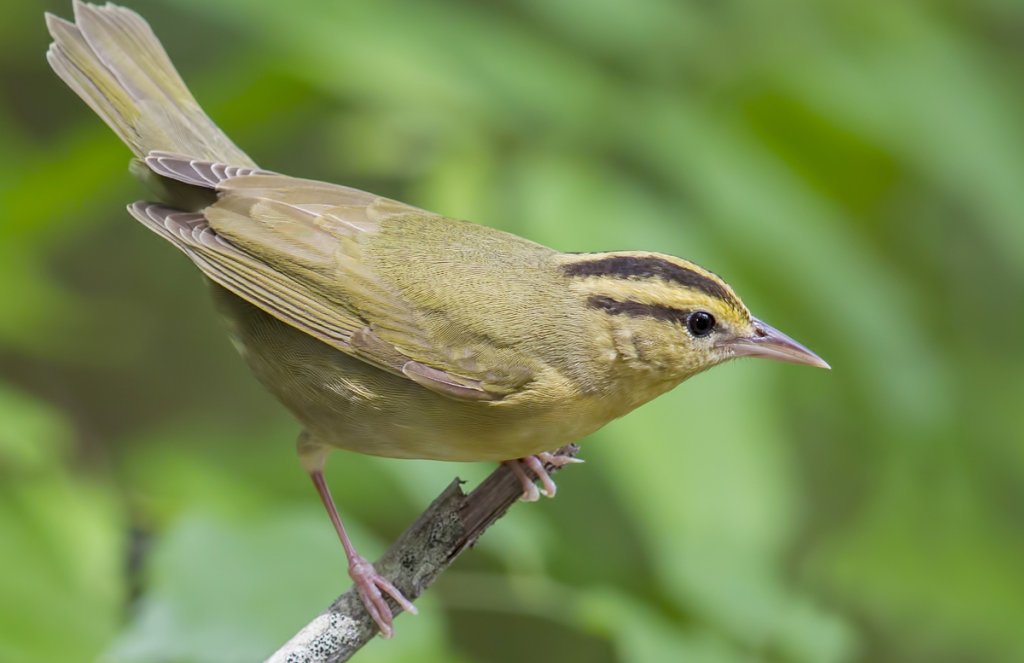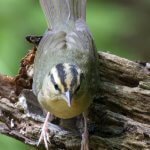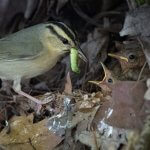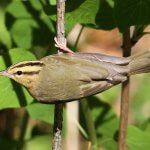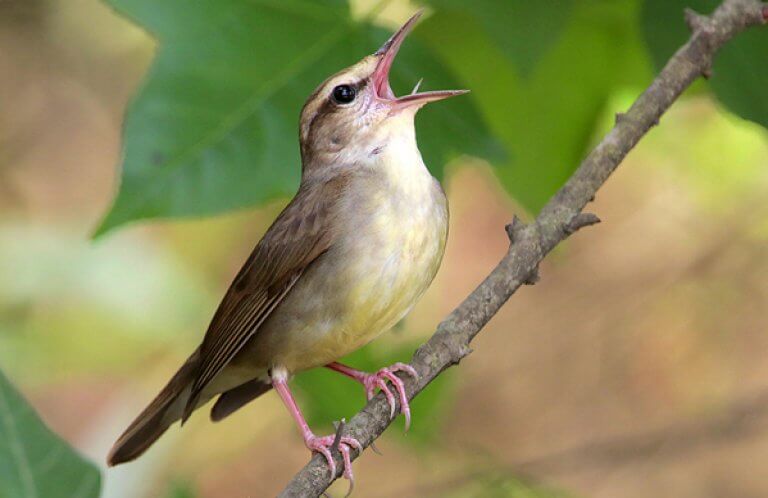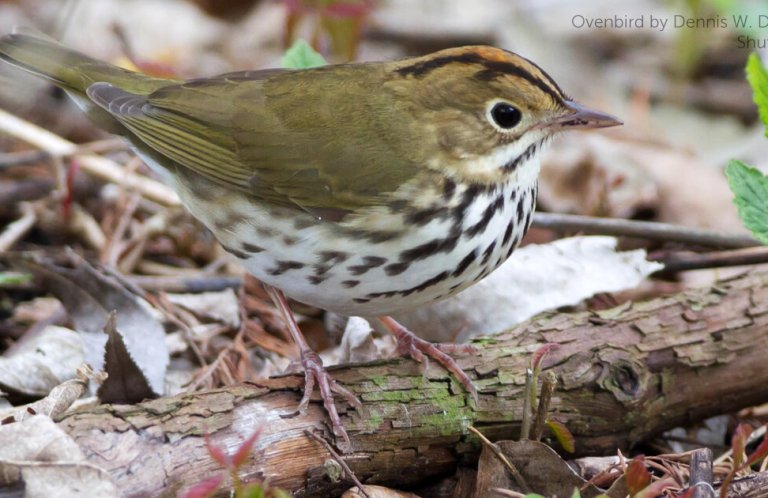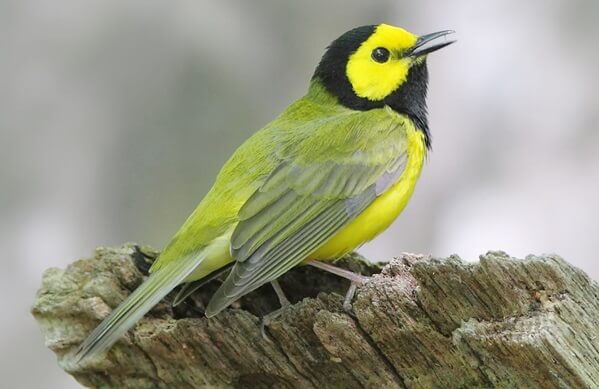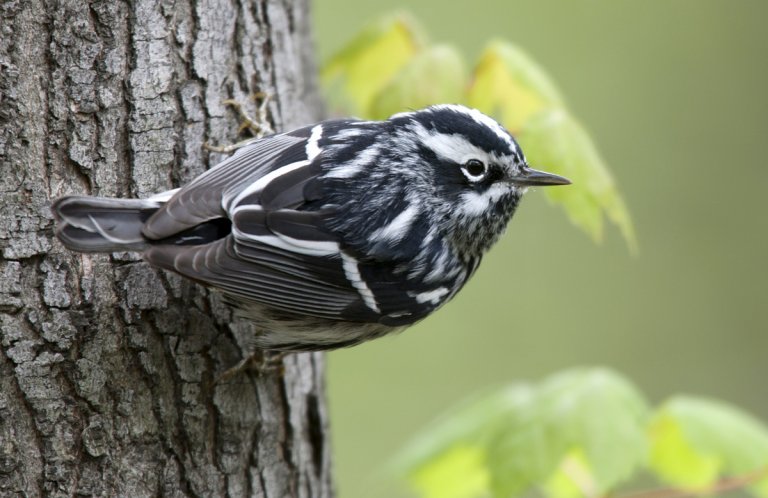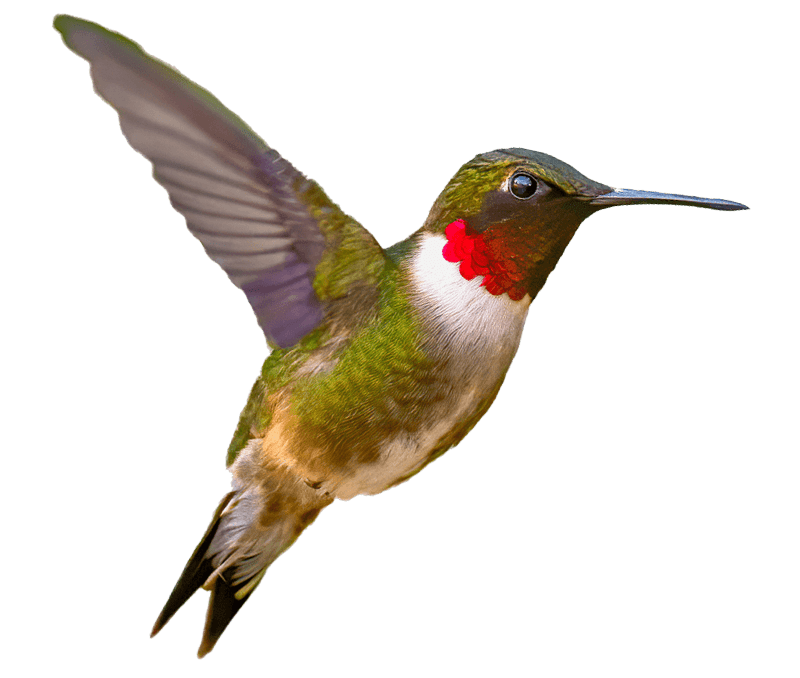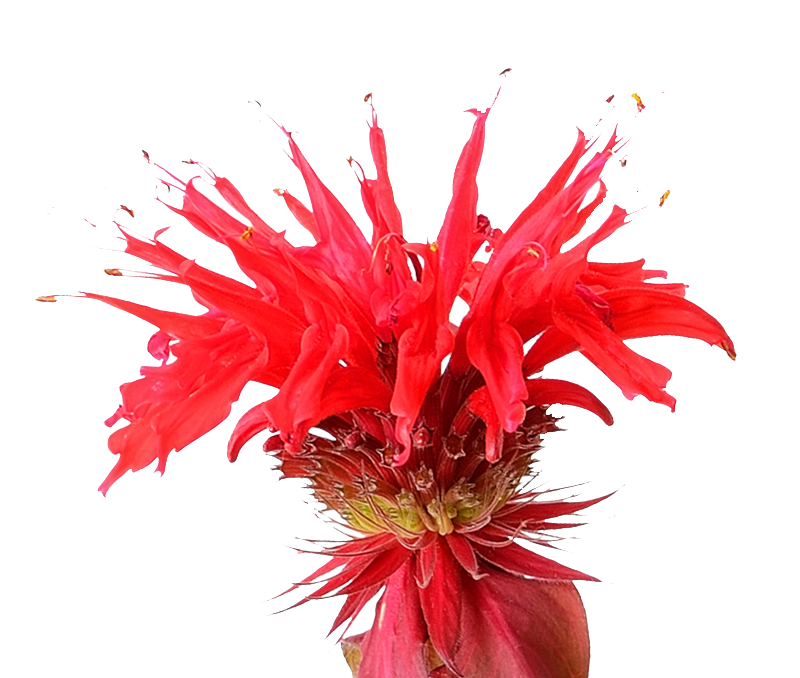About the Worm-eating Warbler
The Worm-eating Warbler haunts the forest interior, where its mechanical-sounding trills can be heard along steep, leaf-carpeted hillsides. A quick glimpse of the singer reveals a rather plain-looking olive, brown, and buff warbler with a boldly striped head. This head pattern distinguishes it from other brown forest warblers such as the Swainson's Warbler, which has a brown crown, occasionally tinged with rufous instead.
Worm-eating Warblers are the only member of its genus, Helmitheros, and are not closely related to any other warbler species. Both its genus and species name refer to eating worms, and give this bird its common name. But there's a catch – the Worm-eating Warbler doesn't actually eat earthworms, a food item more associated with an American Robin or American Woodcock.
This misleading name came about via a colloquial term once used throughout the United States. Caterpillars, especially the Isabella tiger moth caterpillar (also known as a woolly bear) were once commonly called “worms.” Since this warbler feeds heavily on the caterpillar larvae of many types of moths and butterflies, it became associated with the inaccurate descriptor “worm-eating.”
Songs and Sounds
The Worm-eating Warbler's song is a quiet, rather insect-like trill. This song can be confused with that of a Chipping Sparrow or Pine Warbler, but it has a dryer, more mechanical tone. Its call is a clear, loud chip.
Song:
Call:
Breeding and Feeding
Worm-eating Warbler nests are often parasitized by Brown-headed Cowbirds, especially in fragmented forests. The warbler will often lay successive clutches in response to this threat, although this species also has an interesting edge over the intruders. The Worm-eating Warbler chicks fledge at about the same time, or even before, the cowbird chicks, taking away their usual advantage of maturing more quickly than their host. The adult warblers will then care for their own fledglings, ignoring the young cowbirds.
This warbler is monogamous during the breeding season, although males sometimes mate with females in other territories.
The female Worm-eating Warbler builds her nest in two phases: First she selects a nest site, usually on a sloping hillside or bank amid a thick layer of dead leaves. The site is often near a stream or wetland, as she uses wet leaves to form the base of her nest, molding it into a cup shape with her body weight. To finish the nest, she adds a layer of mosses, then softer materials such as deer hair.
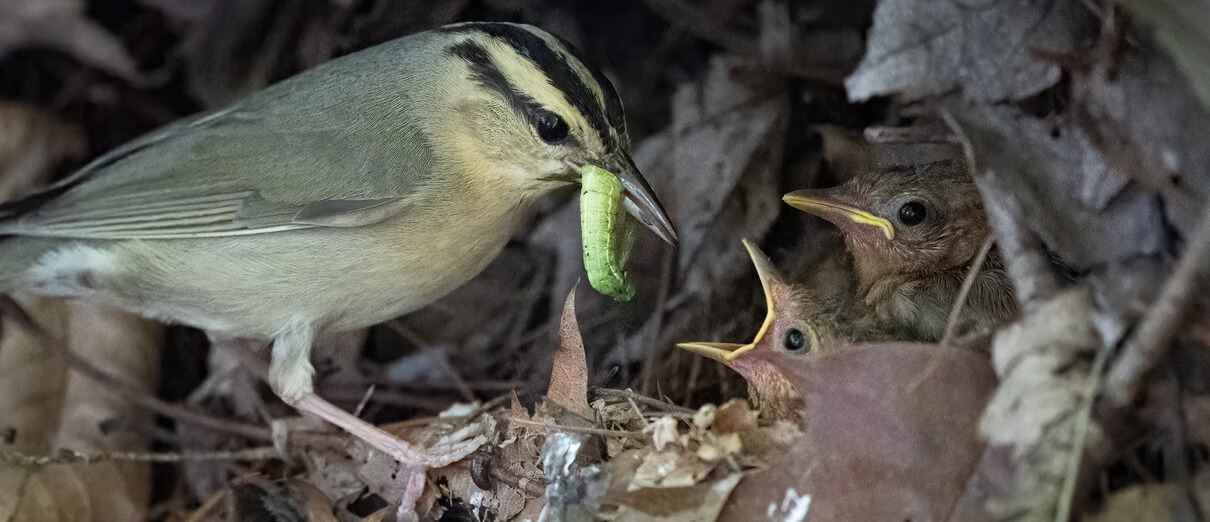
The female lays a clutch of four to six eggs, which she incubates while her mate brings her food. She sits tight while brooding, but if flushed, performs a distraction display to lead potential predators away from the nest. Her mate will also join in this display. Both parents feed the young after hatching, and they fledge in approximately 8-10 days.
After the young Worm-eating Warblers leave the nest they disperse to areas with thicker undergrowth, where their parents continue to care for them for up to a month. The parents usually split the caretaking responsibilities, with each taking responsibility for several young.
Worm-eating Warblers are often seen probing and investigating clumps of dead leaves suspended on branches or in vine tangles within the thick canopies they prefer. They can be seen flying between multiple dead leaf clumps, investigating each one for insects or spiders while dangling acrobatically from a twig or small branch. This species often “gapes” while foraging, meaning that it inserts its closed bill into a bark crevice or curled leaf, then opens up its bill to grab its quarry. It also forages by gleaning from foliage surfaces and hawking after flying insects.
Region and Range
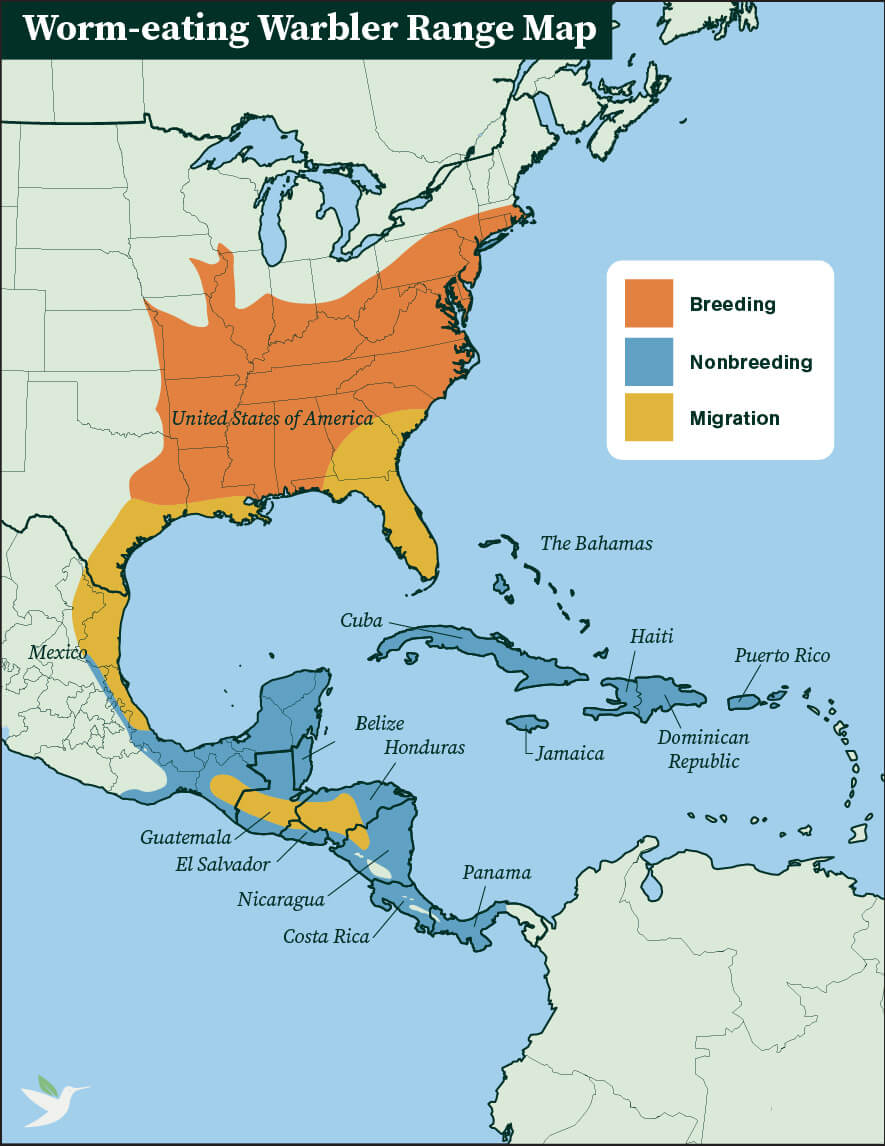
The breeding range of this warbler extends from southern New England along the Atlantic Coast through South Carolina, throughout most of the Appalachian region and west as far as eastern Texas and Oklahoma.
In winter this warbler may be found from northeast Mexico south to Panama and on Bermuda, the Bahamas and the Greater Antilles.
Conservation
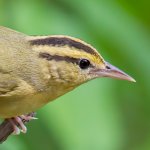
Help support ABC's conservation mission!
The greatest threat to Worm-eating Warblers is forest fragmentation and loss on its breeding and wintering grounds. Loss of forest understory is also a limiting factor.
Collisions with building glass and communications towers may cause significant Worm-eating Warbler mortality during migration.
Use of insecticides has caused reduced productivity in this species. In one study spraying for spongy moths resulted in less available prey and fewer nestlings.
Get Involved
Policies enacted by the U.S. Congress and federal agencies, such as the U.S. Fish and Wildlife Service, have a huge impact on U.S. birds. You can help shape these rules for the better by telling lawmakers to prioritize birds, bird habitat, and bird-friendly measures. To get started, visit ABC's Action Center.
Living a bird-friendly life can have an immediate impact on the birds around you. Doing so can be as easy as adding native plants to your garden, avoiding pesticides, and keeping cats indoors. To learn more, visit our Bird-Friendly Life page.
American Bird Conservancy and our Migratory Bird Joint Venture partners have improved conservation management on more than 8.5 million acres of U.S. bird habitat — an area larger than the state of Maryland — over the last ten years. This is a monumental undertaking, requiring the support of many, and you can help by making a gift today.

